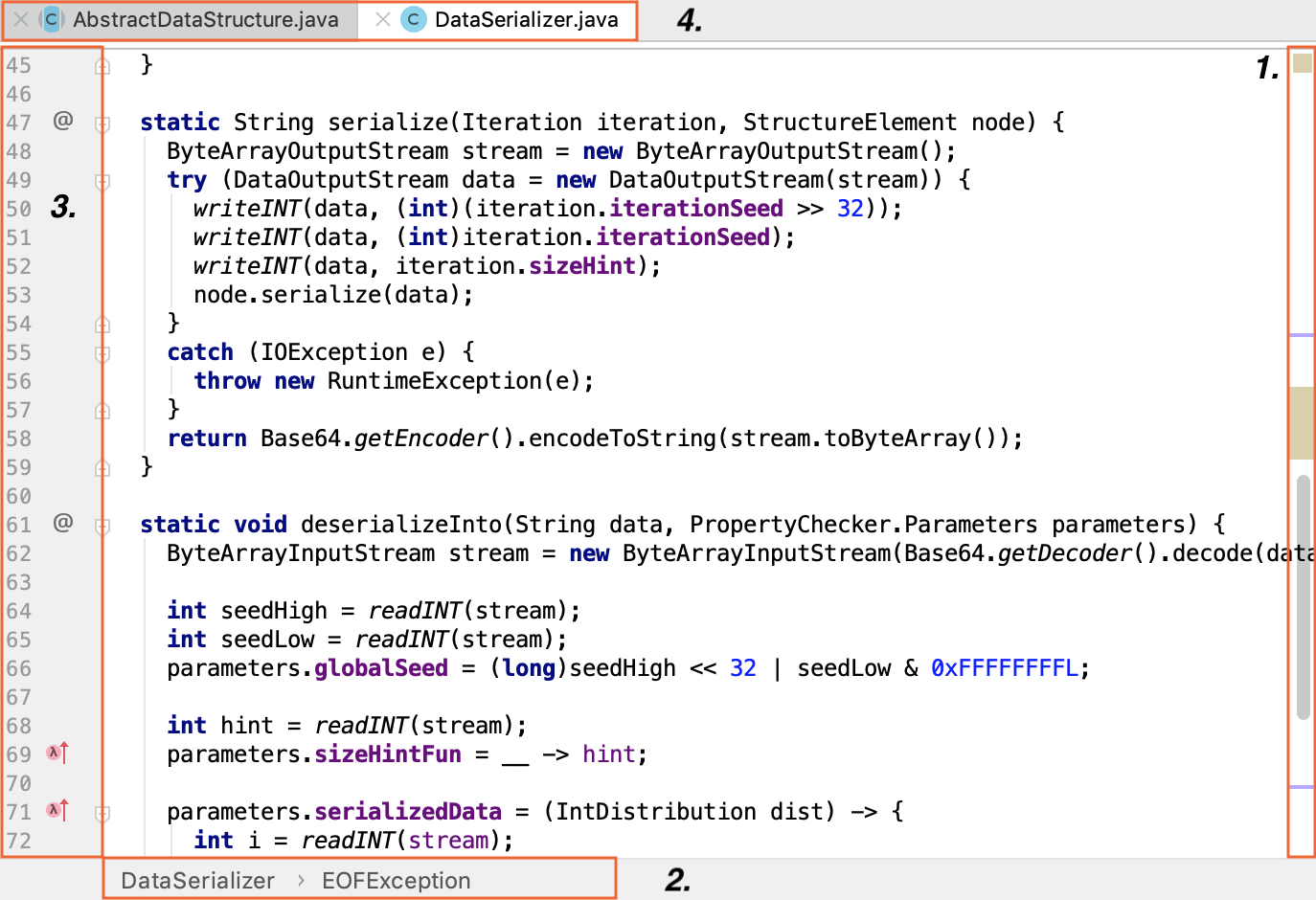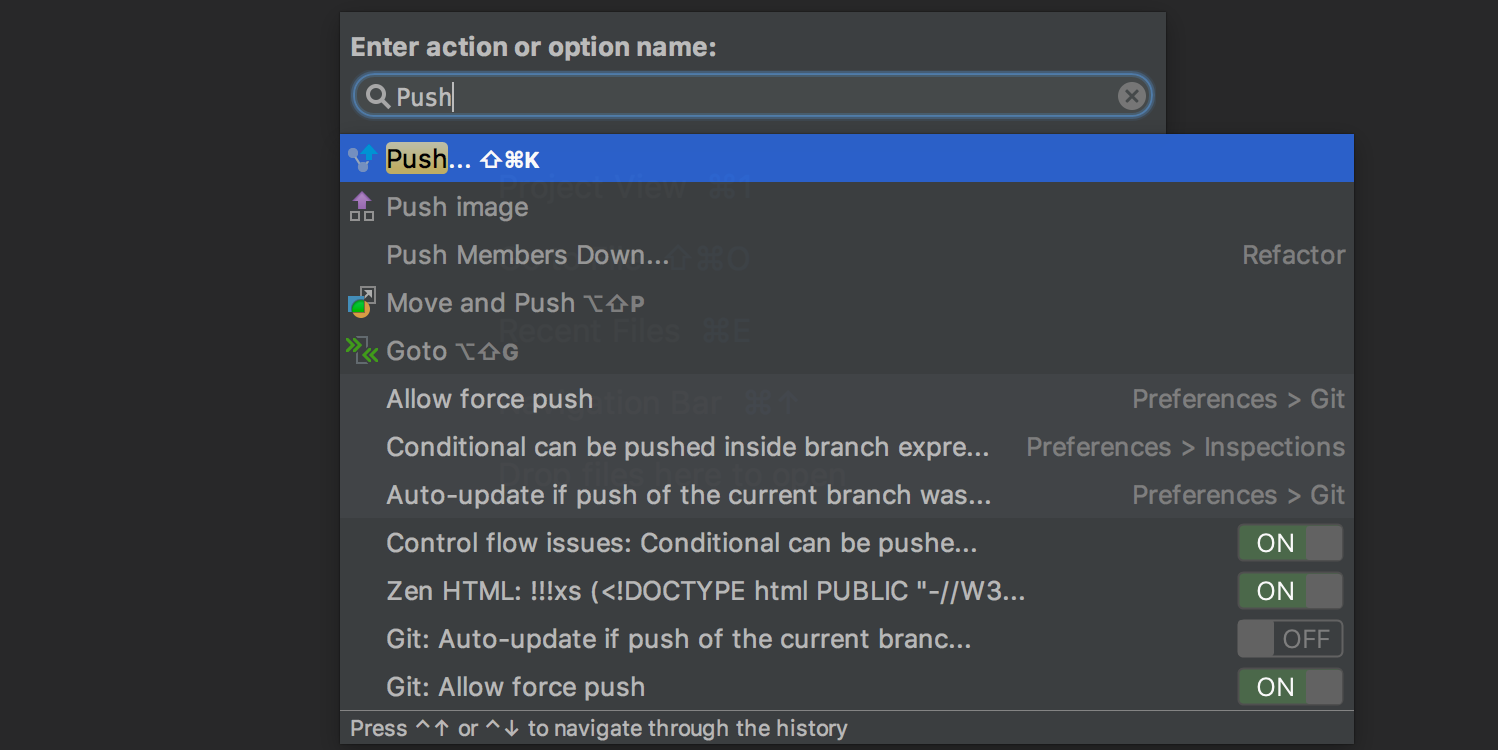IntelliJ IDEA Community Edition is the open-source version ofIntelliJ IDEA,an IDE (Integrated Development Environment)for Java, Groovy, and other programming languages such as Scalaor Clojure. It is made by JetBrains, maker of PyCharm Python IDE.
I've just started using IDEA after switching over from EMacs and was wondering if there was a cheat-sheet available that I could post at my desk for easy reference. It would cut down my learning time significantly without having to lookup what Ctrl-Alt-B did v/s Ctrl-Alt-V. IntelliJ IDEA automatically suggests a predefined keymap based on your environment. Make sure that it matches the OS you are using or select the one that matches shortcuts from another IDE or editor you are used to (for example, Eclipse or NetBeans).
Before you start¶
You should have both Miniconda and IntelliJ installed and working.
Set up IntelliJ using Miniconda¶
Find location of Miniconda Python executable:
The system responds with your path to Python. You need this in the next step.
Within IntelliJ¶
Go to
File>ProjectStructure>PlatformSettings>SDKsClick the Add (+) icon
Choose
PythonSDKEnter location of Miniconda Python executable
/Users/UserName/miniconda3/bin/pythonNote
Substitute your actual path to Miniconda that you found in the previousstep.
Go to
File>ProjectSettings>Project>ProjectSDKSelect from the drop-down: Python 3.6.0 (~/miniconda3/bin/python…)
Go to
Run>DebugClick the Add (+) icon
Select
Pythonand then enter the following:Name: MyProject
Script: /Users/UserName/MyProject/my_file.py
Use Specified Interpreter: Python 3.6.0 (~/miniconda3/bin/python…)
For more information, see the IntelliJ IDEA documentation.
With IntelliJ IDEA, you can write style definitions in CSS as well as in various languages that compile into it, such as Sass, Less, SCSS, or Stylus.
You can also look up documentation for Style Sheets, create and move rulesets, introduce variables, and more.
Before you start
Make sure the CSS bundled plugin is enabled on the Settings/Preferences | Plugins page, see Managing plugins for details.
Code completion
IntelliJ IDEA provides code completion for properties, their values, selectors, variables, and mixins.

Complete Style Sheet classes

Completion for CSS, SCSS, Less, and Sass classes and ids is available in HTML files, in various types of templates (for example, in Angular or Vue.js), as well as in JSX code.
In HTML files, IntelliJ IDEA first suggests classes and ids from the style tag and files linked with link tags. If no matching results are found, IntelliJ IDEA also suggests symbols defined in all stylesheet files in the project. To see all classes and ids defined in the project straight away, before you start typing, press Ctrl+Space twice.
Complete Style Sheet classes from external libraries
With IntelliJ IDEA, you can also get completion for class names from Twitter Bootstrap or other CSS libraries that are linked from a CDN in an HTML file without adding these libraries to your project dependencies.
Open the HTML file with a CDN link to an external CSS library. IntelliJ IDEA highlights the link.
To enable completion for the library, press Alt+Enter on the link and select Download library from the list. Alternatively, hover the mouse over the link and click Download library.
The library is added to the list of JavaScript libraries on the Settings/Preferences | Languages and Frameworks | JavaScript | Libraries page, see Configuring a library added via a CDN link for details.
Complete Sass and SCSS selectors
IntelliJ IDEA also provides completion for Sass and SCSS selectors - including nested selectors and selectors created with an ampersand (&).
Search and navigation
To find usages of a Style Sheet symbol, place the caret at it and press Alt+F7. Learn more from Search for usages in a project.
To jump from a usage of a Style Sheet symbol to its definition, press Ctrl+B. Navigation to definition is available for classes, ids, selectors - including nested selectors and selectors with an ampersand
&- as well as for variables and mixins.Learn more from Go to declaration.
Documentation look-up
For properties and pseudo-elements, IntelliJ IDEA can show you a summary from the corresponding MDN article. This summary is displayed in the Documentation popup which shows a brief description of the property and its values, as well as information about its compatibility with various browsers.
If the property is available in all versions of browsers, IntelliJ IDEA does not show any information about its compatibility.
Otherwise, the Documentation Download intel others driver. popup also lists the browsers and their versions that support the property.
Note that compatibility is checked only for Chrome, Chrome Android, Safari, Safari iOS, Firefox, Internet Explorer, and Edge.
For selectors, IntelliJ IDEA also shows their specificity.
View documentation for a property
Position the caret at the property and press Ctrl+Q or select View | Quick Documentation Lookup from the main menu.
When you hover the mouse pointer over a property, IntelliJ IDEA immediately displays the reference for it in the Documentation popup.
You can turn off this behavior or configure the popup to appear faster or slower, see Configuring the behavior of Documentation popup below.
Configure the behavior of Documentation popup
To turn off showing documentation automatically, open the Settings/Preferences dialog Ctrl+Alt+S, go to Editor | Code Editing, and clear the Show quick documentation on mouse move checkbox.
To have the Documentation popup shown faster or slower, open the Settings/Preferences dialog Ctrl+Alt+S, go to Editor | General | Code Completion, then select the Show the documentation popup checkbox and specify the delay time.
Open the MDN documentation in the browser
In the Documentation popup Ctrl+Q, click the link at the bottom.
Press Shift+F1 or select View | External Documentation from the main menu.
Formatting
With IntelliJ IDEA built-in formatter, you can reformat fragments of Style Sheet code as well as entire files and folders to meet the language-specific code style requirements. The formatter also wakes up automatically when you generate or refactor your code.
To configure formatting for a Style Sheet language, open the Settings/Preferences dialog Ctrl+Alt+S, go to Editor | Code Style | Style Sheets | <your Style Sheet language>, and configure the language-specific settings for tabs and indents, spaces, wrapping and braces, hard and soft margins, and so on.
In the CSS, SCSS, and Less context, IntelliJ IDEA by default uses double quotes for generated string literals in
importstatements and URLs. To use single quotes, open the Other tab, and select Single from the Quote marks list.To apply the chosen style to the entire file after reformatting, select the Enforce on format checkbox below the list.
Currently changing the configuration for quotation marks does not affect injected style sheets and CSS code inside the
<style>tags.To reformat a code fragment, select it in the editor and press Ctrl+Alt+L.
To reformat a file or a folder, select it in the Project tool window and press Ctrl+Alt+L.
See Reformat and rearrange code for more details.
Alternatively, you can use the Prettier formatter, see Prettier for details.
Refactoring
With IntelliJ IDEA, you can convert expressions in Style Sheets into variables and introduce these variables using the var(--var-name) syntax in .css files or the $ syntax in .scss and .sass files.
Introduce variables
In the editor, position the caret at the expression to convert into a variable and press Ctrl+Alt+V or select Refactor | Introduce | Introduce Variable from the context menu or from the main menu.
If more than one occurrence of the selected expression is found, select Replace this occurrence only or Replace all occurrences from the Multiple occurrences found list.
For .scss, and .sass, select the global or local scope for the variable.
Ivt mobile phones & portable devices driver download for windows. In the field with red borders, accept the suggested variable name or specify a custom name. Press Enter when ready.
Intellij Idea Shortcut Cheat Sheet
With IntelliJ IDEA, you can create new rulesets from existing declarations in CSS, SCSS, Sass, or Less files and even move entire rulesets between files using refactoring and intention actions.
Introduce rulesets
Select the declarations to introduce. If you need only one declaration, just position the caret inside it.
Press Alt+Enter and select Introduce ruleset from the list.
IntelliJ IDEA creates a new ruleset with the same selector and moves the selected declarations to it. If the selection contains comments, nested selectors, and so on, they are also moved to the new ruleset.
Move rulesets to other files
Position the caret anywhere in the ruleset to move and press F6.
In the dialog that opens, specify the file to move the ruleset to. If the specified file does not exist, IntelliJ IDEA will suggest creating it.
By default, IntelliJ IDEA automatically opens the file where the ruleset is moved. To change this behavior, clear the Open in editor checkbox.
Common refactorings, such as Copy, Move, or Rename, are also available.
Checking compatibility with browsers
Besides looking up in the documentation popup, you can check Style Sheet properties for compatibility with specific browsers on the fly. This inspection is based on the MDN Browser Compatibility Data and shows you a warning every time a property is not supported in one of the targeted browsers.
Turn on compatibility check
In the Settings/Preferences dialog Ctrl+Alt+S, go to Editor | Inspections.
Expand the CSS node and select the Browser compatibility for properties. In the Options area, select the browsers you want to target and the minimum versions for them.
Changing color values
With IntelliJ IDEA, you can easily change color values in Style Sheets without typing hexadecimal codes.
Choose colors
Open the desired Style Sheet for editing.
Type
color:, and then press Ctrl+Space.Select the desired color value from the suggestion list or choose color.. to pick a custom one.

Change colors
Open the desired Style Sheet for editing, and locate the color property that you want to change.
Click the color icon in the gutter.
Alternatively, if the icons are not shown, press Alt+Enter and select Change color from the list. See To show color icons in the gutter below.
In the Choose color dialog that opens, pick the desired new color and click Choose.
Preview the code of colors
IntelliJ IDEA marks each
colorproperty with a gutter icon of the corresponding color. When you hover over a color icon, IntelliJ IDEA displays a popup that shows the color preview and its hexadecimal code.To use a code instead of a human-readable color name, press Alt+Enter and select Convert color to <color code system> from the list, where <color code system> is HEX, HSL, HWB, or RGB
Show color icons in the gutter
By default, IntelliJ IDEA displays color icons in the gutter. If they are for some reason hidden, you can return them at any time.
In the Settings/Preferences dialog Ctrl+Alt+S, go to Editor | General | Gutter Icons. The Gutter Icons page opens.
In the Common area, select the Color preview checkbox.
Viewing the styles applied to a tag
In HTML, XHTML, JSP and JSPX files, IntelliJ IDEA can show you all the styles applied to an arbitrary tag.
From the context menu of a tag, select Show Applied Styles for Tag.
IntelliJ IDEA opens the CSS Styles tool window with two panes, the left-hand pane shows the styles for the tag and the right-hand pane shows their definitions. For each tag, IntelliJ IDEA opens a separate tab.
From the tool window, you can navigate to tags and definitions of properties in your source code.
To jump to the tag, click on the toolbar of the left-hand pane.
To jump to the definition of a property, select it in the left-hand pane and click on the toolbar of the right-hand pane.
Intellij Hotkey Cheat Sheet
Configuring syntax highlighting
You can configure CSS-aware syntax highlighting according to your preferences and habits.
In the Settings/Preferences dialog Ctrl+Alt+S, go to Editor | Color Scheme | CSS.
Select the color scheme, accept the highlighting settings inherited from defaults or customize them as described in Configuring colors and fonts.
